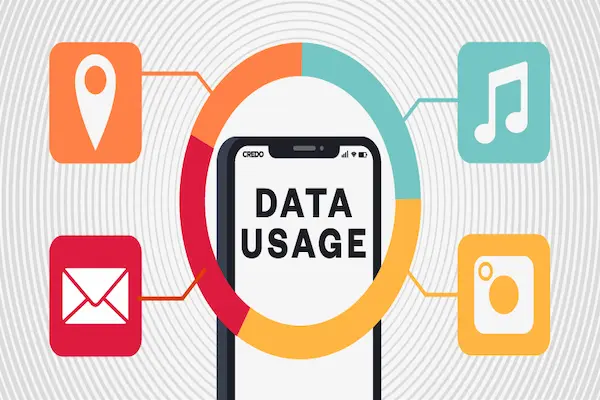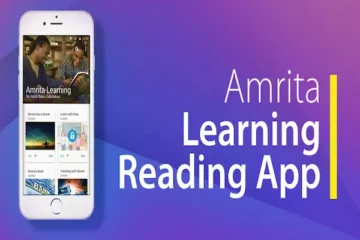Reduce Mobile Data Usage Without Breaking Your Apps
Reduce data usage without breaking your apps.
Advertising
Learn 12 iOS/Android tweaks, streaming and social settings, hotspot tips, and a weekly audit to stay under your cap.
Why “reduce data usage” is about control, not sacrifice
Cutting mobile data does not mean breaking your favorite apps or turning your phone into a brick.
It means using the same apps with smarter defaults, better caches, and less invisible background activity.
When you put a few rules in place, streaming stays sharp, maps stay reliable, and social apps remain fun.
This independent, people-first guide gives you practical iOS and Android steps, plus app-specific tips and a lightweight monitoring routine.
We have no affiliation with device makers or carriers mentioned conceptually here, and features can change without notice.

12 practical iOS/Android tweaks to reduce data usage today
1) Turn on Data Saver without breaking messages or maps
- Enable the system Data Saver to restrict background refresh and lower network chatter.
- Allow critical apps (messages, maps, ride-hailing) to bypass Data Saver so they still update quickly.
- Reopen those whitelisted apps once to confirm notifications and live location still work.
2) Block background data for the worst offenders
- Open each app’s data settings and disable background data for heavy social or shopping apps.
- Leave background allowed for messaging, calendar, and navigation so they stay dependable.
- Revisit this list monthly; habits change and so do app updates.
3) Force Wi-Fi for automatic updates and cloud syncs
- Set app store updates and system backups to “Wi-Fi only” so large downloads do not eat your plan.
- Schedule backups overnight while the phone is charging for reliability and speed.
- Check photo/video auto-uploads and move them to Wi-Fi only as well.
4) Trim video quality defaults globally
- Open each streaming app and set default playback to a balanced HD tier instead of “auto 4K.”
- Disable “always play highest quality on mobile” toggles that ignore bandwidth conditions.
- Keep a quick-access toggle for quality when you truly need 1080p or higher on mobile.
5) Tame autoplay and prefetch in social apps
- Turn off video autoplay on cellular or set it to “Wi-Fi only.”
- Disable prefetching for stories/reels to stop silent bulk downloads while you scroll.
- Mute high-bitrate audio defaults in short-video apps to avoid needless spikes.
6) Cache maps and transit for your routine
- Download offline map regions for your city, commute, and upcoming trips while on Wi-Fi.
- Pin transit lines or stops you use often so timetables load once and stay cached.
- Keep GPS on but reduce live traffic layers unless you are actively driving.
7) Rein in cloud photo and messaging media
- Move auto-upload of photos and videos to Wi-Fi only, keeping thumbnails on cellular.
- In chat apps, disable automatic download of videos and large files on mobile data.
- Use “low-data mode” or “send as compressed” for quick shares that do not need full quality.
8) Optimize browser behavior
- Turn on data-saver or “Lite” modes where available to compress images and scripts.
- Block autoplaying videos and disable background tab refresh over cellular.
- Clear bloated site data for heavy portals that rebuild caches every session.
9) Control push sync frequency
- Set email to fetch at longer intervals or push only priority inbox categories.
- Reduce calendar sync depth to a few months if you seldom browse old events on mobile.
- Disable “sync on cellular” for large third-party file drives and enable it for Wi-Fi only.
10) Prepare travel profiles
- Before trips, create a “Travel Data” profile: tighter Data Saver, stricter background blocks, offline maps.
- Download playlists, podcasts, and reading lists on Wi-Fi so your commute is fully offline.
- Keep a spare low-cost travel eSIM for hotels with unreliable Wi-Fi instead of blowing through hotspot data.
11) Stop stealthy app behaviors
- Turn off in-app video previews in shopping and news apps that silently stream ads.
- Limit location sharing frequency to “while using the app,” which cuts telemetry uploads.
- Review ad personalization toggles that trigger extra tracking calls on cellular.
12) Set usage alerts and soft caps
- Create monthly and weekly data alerts with thresholds at 50%, 75%, and 90% of your plan.
- Add per-app soft caps for repeat offenders and switch them to Wi-Fi only when they hit the limit.
- Review the breakdown every Sunday; small corrections save big data over a month.
Streaming without regrets: video, music, and live events
Video streaming: quality you can feel, data you can afford
- Pick a default quality that fits your screen size; many phones look crisp at 720p on the go.
- Disable HDR over cellular unless you truly notice the difference outdoors.
- Download episodes on Wi-Fi for travel days; prefetching a season is cheaper than streaming on 5G.
- Turn off background “continue watching” previews that silently fetch segments.
Music and podcasts: perfect for offline first
- Download playlists and podcasts on Wi-Fi and keep a small rotating offline library.
- Lower streaming bitrate on cellular; most earbuds mask the difference in noisy environments.
- Disable auto-download of new podcast episodes unless on Wi-Fi and charging.
Live sports and events: plan the spikes
- Expect sustained high bitrate; watch on Wi-Fi or plan extra data for match nights.
- Use audio-only mode when video is not essential, such as commutes or workouts.
- Turn off 4K and multi-angle feeds on cellular; save them for the TV or home Wi-Fi.
Maps and navigation: reliable directions with less data
Build an offline-first routine
- Download map tiles for your region and common routes before you need them.
- Disable satellite layer and real-time extras unless actively driving.
- Use “routes preview” on Wi-Fi to cache initial guidance and voice prompts.
Traffic and rides: real-time where it matters
- Enable live traffic or rideshare updates only during trips; turn them off afterward.
- Reduce background location accuracy for rideshare apps outside active rides.
- Archive old ride receipts and cached maps to keep storage and data tidy.
Social media: keep the fun, drop the data drain
Scroll smarter
- Set autoplay to Wi-Fi only; tap to play when you really want video.
- Disable “preload next video” and auto-preload for stories or reels.
- Limit high-resolution photo uploads on cellular; queue them for Wi-Fi.
Notifications that respect your plan
- Turn off marketing push and keep only direct messages, mentions, or tagged comments.
- Disable background app refresh for networks that are time-sinks rather than must-haves.
- Use per-app Data Saver modes where offered to compress images and clips.
Hotspot data: powerful, but easy to blow
Size your hotspot needs realistically
- Estimate how many hours per week you tether a laptop and what you do during those hours.
- Assume video meetings can use hundreds of megabytes per hour; audio meetings use far less.
- Cap laptop updates to Wi-Fi only and pause cloud sync during hotspot sessions.
Make hotspot sessions efficient
- Use 5 GHz or 6 GHz hotspot bands for short-range, faster sessions that finish sooner.
- Lower laptop streaming resolution and disable background tabs that auto-refresh.
- Keep the phone cool on a stand; thermal throttling can prolong sessions and burn more data overall.
Monitor consumption without heavy apps
Use built-in per-app meters
- Open the system data usage page weekly and sort by “used most” to spot new offenders.
- Tap into each app’s mobile versus Wi-Fi breakdown to find hidden cellular usage.
- Reset statistics at the start of your billing cycle to keep comparisons consistent.
Create a Sunday five-minute audit
- Check total used versus plan allowance and set a course correction if you are ahead of pace.
- Downgrade quality or tighten background rules for the top two data hogs that week.
- Log one note: the change you made and any side effects; future you will thank you.
Low-impact habits that add up to big savings
- Pre-download maps, playlists, and shows on home Wi-Fi the night before busy days.
- Text instead of video call when on weak coverage or nearing your cap.
- Use reading list or offline mode for long articles instead of opening them on cellular multiple times.
- Favor audio-only streams during workouts or commutes where you do not watch the screen.
- Share photos as albums or “light” versions on cellular; resend full-res on Wi-Fi if needed.
FAQ: reduce data usage, data saver, background data, video quality, hotspot data
How can I reduce data usage without killing notifications?
Enable Data Saver and then whitelist essential apps like messages and ride-hailing so time-sensitive alerts still push through.
Will video look terrible if I drop from 1080p to 720p on mobile?
On most phone screens, 720p looks sharp in motion; save 1080p or higher for Wi-Fi and larger displays.
Do offline maps still show live traffic?
Only if you enable traffic; the base map and routes work offline, but traffic and incidents need data.
Why do social apps use data even when I am not scrolling?
Autoplay, prefetch, and background refresh silently load media; disable them on cellular.
Is hotspot data separate from my plan?
Many plans count hotspot against a separate bucket; others draw from overall data with speed caps after a limit.
How do I stop photo backups from eating my plan?
Set auto-upload to Wi-Fi only and allow cellular only for thumbnails or manual uploads.
What if a critical app breaks after Data Saver?
Whitelist that app to bypass Data Saver and leave others restricted.
Are browser data savers safe?
They compress images and scripts; if a site breaks, add it to an allowlist or turn the feature off temporarily.
Why does my usage spike at month-end?
Apps may rush to sync; keep uploads on Wi-Fi and set alerts to avoid last-minute surprises.
Do push emails burn lots of data?
Not usually; large attachments and embedded images do—fetch headers first and download attachments on Wi-Fi.
“One-hour overhaul”: a structured routine to lower data this month
Phase 1 — Switch global levers (10 minutes)
- Enable Data Saver and create a whitelist for messages, maps, and ride-hailing.
- Move updates, backups, and cloud drives to Wi-Fi only.
- Set system alerts at 50%, 75%, and 90% of plan usage.
Phase 2 — Fix the top three hogs (20 minutes)
- Open data usage stats and identify your top three cellular apps this cycle.
- Disable video autoplay and prefetch on those apps; lower quality defaults.
- Block background data and notifications you do not need from them.
Phase 3 — Make travel and commute offline (15 minutes)
- Download playlists, podcasts, and offline maps for the week on Wi-Fi.
- Create a “Travel Data” focus mode: tighter saver, muted autoplay, offline media.
- Stage a spare travel eSIM profile if your plan’s hotspot bucket is small.
Phase 4 — Lock the gains (15 minutes)
- Pin quality toggles in streaming apps so you can drop to a lower tier on demand.
- Schedule a Sunday five-minute audit to keep changes gentle and cumulative.
- Document two settings you changed and any app behavior to watch.
Final checklist: reduce data usage, data saver, background data, video quality, hotspot data
- System Data Saver on, with essential apps whitelisted.
- Background data blocked for top offenders; messages and maps preserved.
- App updates, backups, photos, and cloud drives set to Wi-Fi only.
- Streaming defaults tuned to sensible HD; autoplay and prefetch disabled on cellular.
- Offline maps and transit cached for routine routes and upcoming trips.
- Chat apps limited to manual media downloads on cellular.
- Browser data saver and autoplay blocks enabled where stable.
- Email fetch and file sync scheduled to reduce background chatter.
- Hotspot sessions optimized with caps, cooler device placement, and paused laptop updates.
- Weekly usage audit scheduled, with alerts at key thresholds.
Editorial note
This guide is independent and purely informational to help you reduce data usage without breaking your apps.
We do not have affiliation with carriers, device makers, apps, or platforms referenced conceptually here, and app features may change without notice.
Validate settings on your device and adapt these steps to your plan’s rules to keep your experience fast, reliable, and efficient all month.





